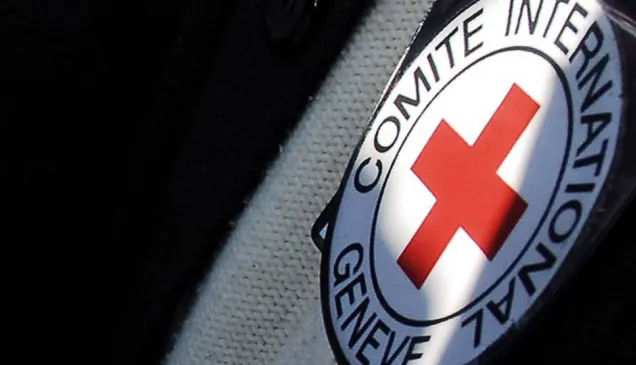November 2013. The international exhibition began at Tahala Rarihasina Analakely, a building constructed at the start of the 20th century in the heart of Madagascar's capital.
Madagascar: Exhibition on “War from the Victims' Perspective”
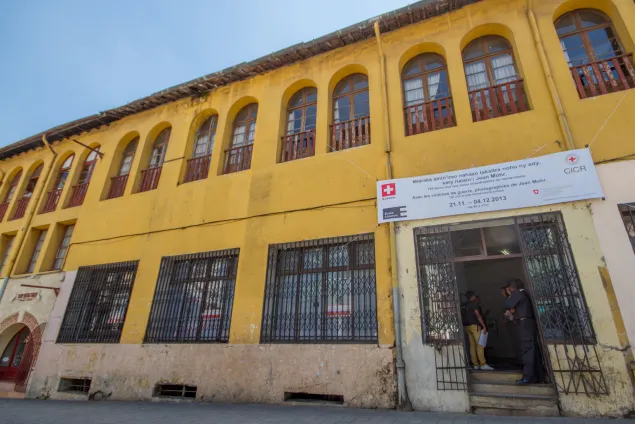
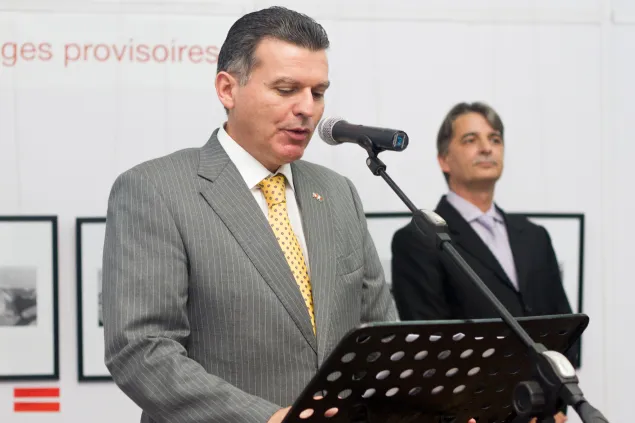
At the opening, the Swiss Ambassador, Eric Mayoraz, highlighted the fact that Switzerland is closely linked to the founding of the ICRC and that it is the custodian of the Geneva Conventions, which firmly demonstrates its long-standing commitment to humanitarian endeavour.
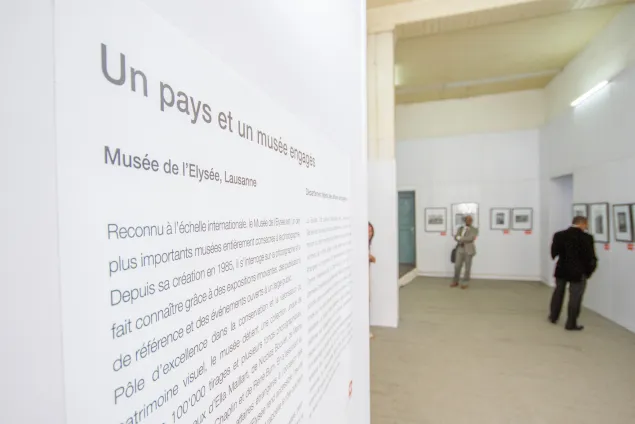
The interior of Tahala Rarihasina. The exhibition was produced by the Musée de l'Elysée in Lausanne and reproduced to the letter in Antananarivo.

Alongside the exhibition in Antananarivo, students were invited to attend a round table on the challenges of international humanitarian law in Madagascar. The event was organized by the ICRC and the Swiss Embassy.
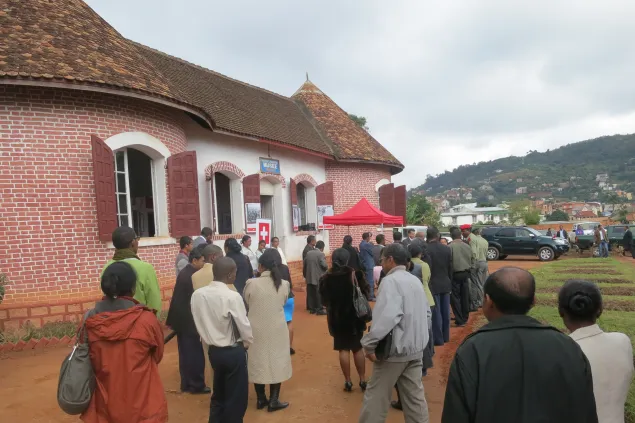
April 2014. In the city of Fianarantsoa, in the south-east of the country, the exhibition was displayed in the Faniahy museum for two months. It was a partnership between the Swiss Embassy, the ICRC and the University of Fianarantsoa. A university conference on international humanitarian law was also organized.
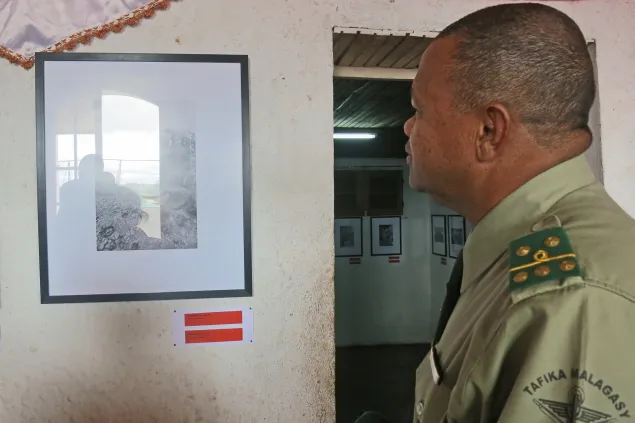
Fianarantsoa, April 2014. The exhibition was part of commemorations of the 150th anniversary of the 1864 Geneva Convention, whose aim was to protect wounded soldiers on the battlefield.
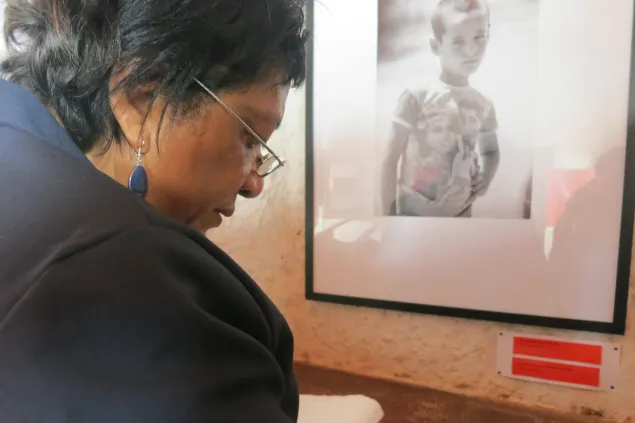
The Chair of Madagascar's National Committee on International Humanitarian Law writes in the exhibition's visitors’ book in Fianarantsoa, where more than 2,500 people came to see the exhibition.
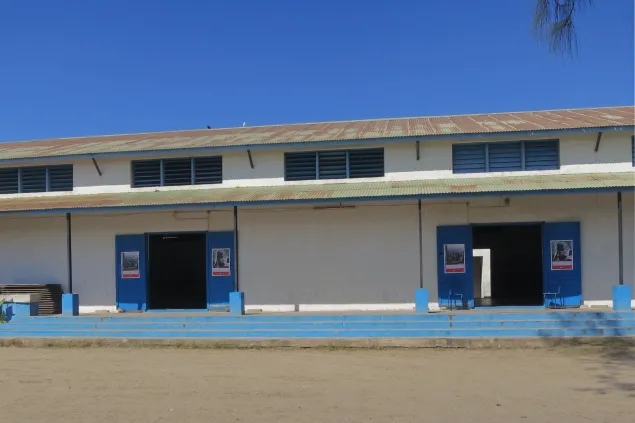
In June 2015, the 60 photos making up the exhibition travelled through eastern and central Madagascar to Morondava, a town situated in the west of the country and famous for its avenues of baobab trees.

Morondava, June 2015. The exhibition charts the experiences of those displaced by armed conflict through four themes: "portraits of exile," "temporary landscapes," "children's diaspora" and "life goes on."
In 2013, the ICRC celebrated its 150th anniversary, and Switzerland celebrated 150 years at the forefront of international humanitarian assistance. To mark the occasion, the Swiss Embassy in Madagascar and the ICRC's regional Indian Ocean delegation organized a photo exhibition on the theme of war victims. The exhibition's three-year tour of Madagascar recently came to an end.
The exhibition, entitled "War from the Victims' Perspective – Photographs by Jean Mohr," sensitively and respectfully displayed portraits of the victims of conflict, refugees and communities torn apart by war and still under threat. The photos focused on the emblematic cases of Palestine, Cyprus and Africa.
Jean Mohr, a Swiss humanist photographer and former ICRC delegate, sought early on to understand and communicate the plight of civilians trapped in situations of war. Making Jean Mohr's work accessible to the people of Madagascar represented an opportunity to promote international humanitarian law in the country.
The exhibition was displayed for the first time outside Switzerland in Madagascar's capital, Antananarivo, in November 2013, before moving to Fianarantsoa from April to June 2014 and finally to Morondava in June 2015. In Antananarivo alone, more than 1,200 visitors came to see the exhibition. Here is a brief photo reportage of the highlights of this wonderful exhibition.


